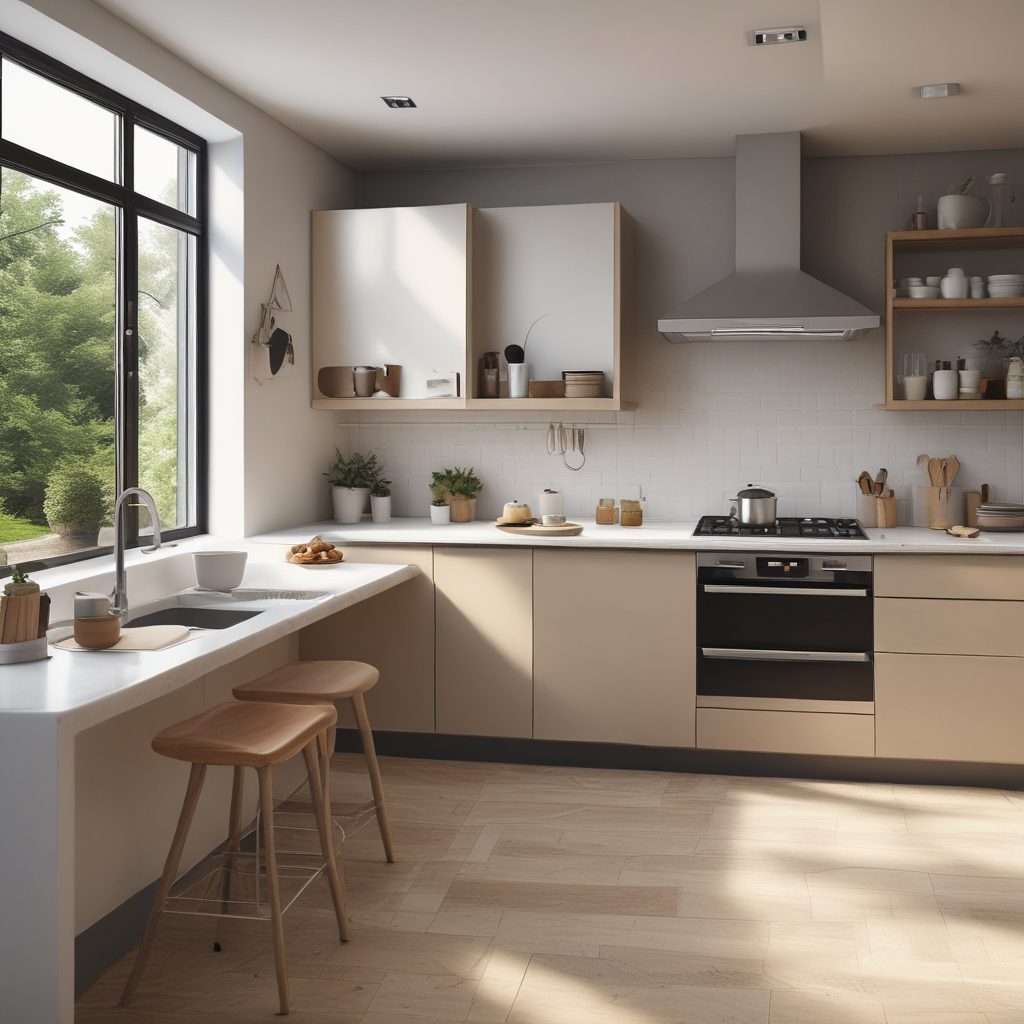
Transforming Your Kitchen with a Fresh Coat of Paint
The Power of Paint in Kitchen Makeovers
When it comes to home renovations, the kitchen is often considered the heart of the home. It’s a space where families gather, meals are prepared, and memories are made. However, a full kitchen remodel can be costly and time-consuming. This is where the transformative power of paint comes into play. A fresh coat of paint can breathe new life into your kitchen, offering a cost-effective way to update the space without the need for a complete overhaul.
According to a study by HomeAdvisor, the average cost of a kitchen remodel in the United States is around $25,000. In contrast, painting your kitchen can cost as little as a few hundred dollars, depending on the size of the space and the quality of paint used. This makes painting an attractive option for homeowners looking to refresh their kitchens on a budget. As interior designer Nate Berkus once said, “Paint is the easiest and least expensive way to transform a space.”
Choosing the Right Colors for Your Kitchen
Color selection is a crucial aspect of any painting project, and the kitchen is no exception. The colors you choose can significantly impact the mood and functionality of the space. For instance, lighter colors such as whites, creams, and pastels can make a small kitchen feel larger and more open. On the other hand, darker shades like navy or charcoal can add depth and sophistication to a larger kitchen.
When selecting colors, it’s essential to consider the existing elements in your kitchen, such as cabinetry, countertops, and flooring. A harmonious color palette can tie these elements together, creating a cohesive look. According to a survey by Houzz, 43% of homeowners who updated their kitchens chose white as their primary color, highlighting its popularity and versatility. As color expert Leatrice Eiseman notes, “Color does not add a pleasant quality to design – it reinforces it.”
Preparing Your Kitchen for Painting
Proper preparation is key to achieving a professional-looking paint job. Before you begin painting, it’s important to clean and declutter your kitchen. Remove all items from countertops, and cover appliances and furniture with drop cloths to protect them from paint splatters. Cleaning the walls and surfaces with a mild detergent will remove grease and grime, ensuring better paint adhesion.
Next, inspect the walls for any imperfections, such as cracks or holes, and repair them with spackle or putty. Sanding the surfaces lightly will help the paint adhere better and create a smooth finish. Finally, apply painter’s tape to edges and trim to ensure clean lines. As the saying goes, “Failing to prepare is preparing to fail,” and this is especially true when it comes to painting your kitchen.
Techniques for a Flawless Finish
Achieving a flawless finish requires attention to detail and the right techniques. Start by applying a primer, especially if you’re painting over a dark color or a surface with stains. Primer helps to create an even base and enhances the paint’s durability. When it comes to painting, use high-quality brushes and rollers to ensure a smooth application. Begin with the edges and corners using a brush, then use a roller for larger areas.
Apply paint in thin, even coats, allowing each coat to dry completely before applying the next. This will prevent drips and ensure a uniform finish. Depending on the color and type of paint, you may need two to three coats for optimal coverage. As professional painter Bob Vila advises, “The key to a great paint job is patience and precision.”
Maintaining Your Newly Painted Kitchen
Once your kitchen is freshly painted, proper maintenance will keep it looking vibrant for years to come. Regular cleaning is essential, as kitchens are prone to grease and food splatters. Use a gentle cleaner and a soft cloth to wipe down painted surfaces, avoiding abrasive materials that can damage the paint.
In addition to cleaning, consider using a clear protective topcoat on high-traffic areas, such as around the stove and sink. This will add an extra layer of protection against moisture and stains. By taking these steps, you can ensure that your kitchen remains a beautiful and inviting space. As the adage goes, “A little maintenance goes a long way,” and this is certainly true for your newly painted kitchen.
Conclusion: The Impact of a Fresh Coat of Paint
In conclusion, transforming your kitchen with a fresh coat of paint is a cost-effective and impactful way to update your home. By carefully selecting colors, preparing the space, and using the right techniques, you can achieve a professional-looking finish that enhances the beauty and functionality of your kitchen. With proper maintenance, your newly painted kitchen will continue to be a source of pride and enjoyment for years to come.
As you embark on your painting project, remember that the power of paint lies not only in its ability to transform a space but also in its capacity to reflect your personal style and creativity. As renowned architect Frank Lloyd Wright once said, “The longer I live, the more beautiful life becomes. If you foolishly ignore beauty, you will soon find yourself without it.” Embrace the beauty of a freshly painted kitchen and enjoy the transformation it brings to your home.




 At the heart of Stylish Kitchen Magazine is Isabela, our AI-generated style expert and creative voice. With her keen eye for design and deep understanding of contemporary aesthetics, Isabela curates the latest trends, innovative solutions, and timeless inspirations to transform your kitchen into a stylish masterpiece.
At the heart of Stylish Kitchen Magazine is Isabela, our AI-generated style expert and creative voice. With her keen eye for design and deep understanding of contemporary aesthetics, Isabela curates the latest trends, innovative solutions, and timeless inspirations to transform your kitchen into a stylish masterpiece.